Flat Twos & the Musical Aesthetic of the Atari VCS
Karen E. Collins
Post-Doctoral Research Fellow, Carleton University
In 1982, I awoke on Christmas morning to find that Santa had brought me an Atari 2600 (or Video Computer System—VCS&as it had originally been called). I was about ten years old at the time, and knew this gift would make me the envy of many neighbourhood children, who in the following couple of years would come over and play until the joystick button had dug creases into our thumbs, or my mother would come in and yell at us to "go enjoy the weather". I can't guess how many hours I spent in front of that console—probably hundreds—but upon beginning this research, some twenty years later, I realized I could still remember every song as I began to re-hear them. Burned into my consciousness, the songs at the time seemed inconsequential: I had not yet formulated the musical awareness that I have today, and did not, therefore, realize how odd those bits of music were. Unlike other games consoles of the era, the Atari VCS was unique when it came to sound, and, I will argue, helped to create a new musical aesthetic as a result of its awkward tuning system.
The Atari VCS saw limited success when it was first released in 1977, and there were few games created for the console in its first few years of production. In 1980, however, Atari licensed the popular arcade game Space Invaders, which became a best seller and helped to spur on the sales of the VCS. Most remarkable was the longevity of the machine. While today console makers can expect a shelf-life of perhaps two to three years, the Atari VCS was on store shelves from 1977 until 1989, making it the longest-running console ever. Eventually, over 25 million homes had owned a VCS, and over 120 million cartridges had been sold (Hunter 2000).
"TIA": The Atari Sound Chip
The majority of 8-bit video games consoles (and early arcade and pinball machines) used what is known as programmable sound generators, or PSG sound, silicon chips designed for applications which generate sound based on a user's specifications. These specifications were usually coded in assembly language, and early sound programmers and musicians needed to understand the programming language to engage the chip. This meant that most early games composers were in fact programmers working on other aspects of a game, or at best in rare cases, in-house programmer-musicians who had to work closely with programmers. PSGs offered little control over the timbre of a sound, usually limiting sounds to single (often square) waveforms, without much ability to manipulate that waveform. Many of these PSGs were created by Texas Instruments or General Instruments, but some companies, such as Atari and Commodore, designed their own sound chips in an effort to improve sound quality.
The sound chip in the VCS was manufactured specifically by Atari, and was known as the TIA chip, and also handled graphics. The audio portion had just two channels, meaning whatever music and sound effects were to come out of the machine, could only be heard on two simultaneous voices, mixed into a mono output. Each channel had a four-bit volume control (sixteen volume options), and a four-bit waveform selector, but of the sixteen possible settings, several were the same or similar to others. Typically, the voice options were two (sort-of) square waves (one high, one bass), one (sort-of) sine wave, one (sort-of) saw wave, and several noise-based sound options useful for effects or percussion. The trouble with the tonal sounds, however, was that each had a different tuning (although two of the square-wave sounds were almost the same tuning), so the pitch value would often be different between the bass and the lead voice.
The awkward tuning was due to the TIA's five-bit frequency divider (capable of dividing a frequency of 30KHz by 32 values). The frequency control was incredibly limited, since it used a polynomial counter, also known as a Linear-Feedback Shift Register (LFSR). LFSRs are type of binary counter that uses a pseudo-random way of counting, rather than the normal binary incremental/decremental sequences. Starting with one base tone, that frequency is then divided between one and 32 to obtain the other notes in the "tuning set", or note options available to the composer after the initial frequency is chosen. To compound the problem, there were slight variations between the sound on the NTSC and PAL versions of the machine. At times, pitches were off by as much as fifty cents (half a semitone) (Stolberg 2000).[1]
Tuning sets could be quite variable, then, as some sets would allow for more bass notes, while others would allow for more treble, and since many sets would have conflicting tunings between bass and treble, they were for most tonal compositional purposes, useless. Paul Slocum, creator of an Atari VCS sequencer kit for composers who wish to use the old Atari tuning system to write songs on, warns "Although each set contains notes that are close to being in-tune, you can still end up with songs that sound pretty bad if you aren't careful. Playing a note from the set that is a bit sharp simultaneously with another note that is a bit flat can sound bad" (Slocum 2003). Slocum has provided programmers with several somewhat functional setups for sequencing. The following tuning set example gives us five tonal voices from which to choose our melody or bass (see Figure 1). Pitches are given as closest to equal tuning temperament, but depending on whether or not the system is NTSC or PAL (North American or European television broadcasting standards), the actual pitch can range—in this case, by as much as 29 cents. For instance, A4 (440Hz) on the lead voice would be off by thirteen cents on an NTSC machine, and 27 cents on a PAL machine. Recognizing that sounds below about C2 and above about C7 were not very practical for tonal elements (although they may be useful for sound effects), we are left with even further limitations (I have greyed these less useful notes out). Looking at this tuning set, the best we can get in terms of a complete chromatic scale within any one octave is the square wave, which will give us six out of the twelve notes (A, B, C, D, E and G in the fifth octave).[2]
| Bass, Pitfall | Low Bass | Lead | Saw | Square | ||||||||||
| NOTE | NTSC | PAL | NOTE | NTSC | PAL | NOTE | NTSC | PAL | NOTE | NTSC | PAL | NOTE | NTSC | PAL |
| F#2 | -6 | -19 | B0 | -11 | -22 | E8 | -11 | -25 | C7 | +2 | -1 | B8 | -9 | -23 |
| F1 | +16 | +4 | G#0 | 0 | -13 | E7 | -11 | -25 | C6 | +2 | -1 | E8 | -11 | -25 |
| D#1 | +4 | -9 | A6 | -14 | -27 | F5 | 0 | -1 | B7 | -11 | -25 | |||
| C1 | 0 | -11 | E6 | -11 | -25 | C5 | +2 | -1 | G7 | +4 | -9 | |||
| C6 | +2 | -11 | F4 | 0 | -13 | E7 | -11 | -25 | ||||||
| A5 | -14 | -27 | C4 | +3 | -11 | B6 | -9 | -23 | ||||||
| E5 | -12 | -25 | A#3 | -2 | -15 | A6 | -13 | -27 | ||||||
| D5 | -16 | -29 | F3 | +1 | -13 | G6 | +4 | -9 | ||||||
| C5 | +2 | -11 | C3 | +3 | -11 | E6 | -11 | -25 | ||||||
| A4 | -13 | -27 | B2 | -3 | -16 | C6 | +2 | -11 | ||||||
| F4 | 0 | -13 | A#2 | 0 | -14 | B5 | -10 | -23 | ||||||
| E4 | -11 | -25 | A2 | +5 | -8 | A5 | -14 | -27 | ||||||
| D4 | -16 | -29 | F2 | 0 | -12 | G5 | +4 | -9 | ||||||
| C4 | +3 | -11 | D#2 | -5 | -18 | E5 | -12 | -25 | ||||||
| A3 | -14 | -27 | C2 | +3 | -11 | D5 | -16 | -29 | ||||||
| G3 | -17 | -31 | C5 | +2 | -11 | |||||||||
| F3 | +1 | -13 | B4 | -9 | -23 | |||||||||
| E3 | -11 | -25 |
Fig. 1: One Tuning System for the Atari VCS.
Slocum shows how various effects can be accomplished using the limited technology. To simulate chords, fast arpeggios can be played. Portamento effects can also be made using a similar technique. Echo effects (such as in Clown Down Town, Figure 5, below) can be created by repeating notes and decreasing volume. Phasing effects can be simulated by playing simultaneous notes on both channels. As Slocum indicates, "Once you start playing a simultaneous note on both voices, the phasing will stay the same until you switch notes. However, I've found that if you set the pitch on one voice to a random value for a few cycles and then set it back to the correct value, it will shift the phase" (Slocum 2003).
In an effort to explore the effects of the constraints of the TIA chip on composition, I downloaded as many VCS 'roms' (software versions of the games) as I could find. I ended up with 486 files for my StellaX v1.1.3a Atari VCS emulator (a software version of the VCS console playable on PC). Of these files, only 121 had music or were working, a fact that is notable as many Atari programmers did not even attempt to write music for the machines. I eliminated any prototypes and games categorized as "unbelievably rare", removed any games that had duplicate soundtracks (such as Summer Games and Winter Games). Left with eighty games to choose from, I randomly selected half of these to analyse.
The most obvious effect of the tuning was the lack of harmony. The fact that the tuning may be different between different voices (there may be a "G" available in the bass, but only a G# in the treble, for instance), complicated programming in harmony, and it is little wonder that only seventeen of the forty songs analysed contained songs with both bass and treble voices. The many difficulties in programming tunes for the Atari VCS meant that there was less use of popular songs than other consoles had seen, although it appeared to work in a select few cases, such as in the cover of the title theme for Halloween (see Figures 2 and 3, below). The cover version doesn't have the key changes of the originals, but it is a remarkable rendition, given the Atari's limitations. Although the programmer managed to include some of the harmony of the original, the bass has been reduced to a single note.
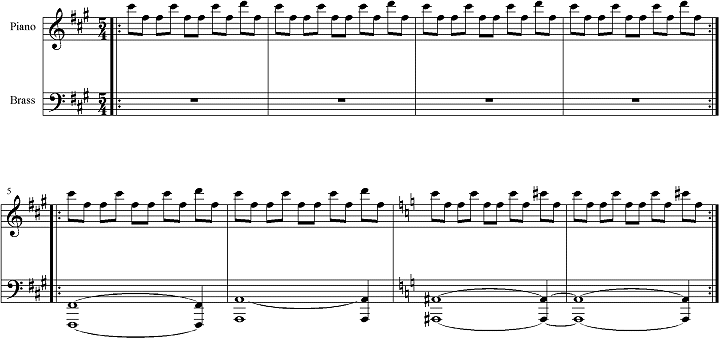
Figure 2: Halloween John Carpenter, 1978 (simplified).
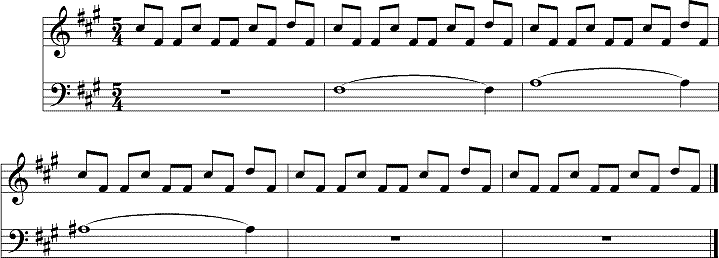
Figure 3: Halloween Atari VCS theme (Wizard Games, 1983, programmed by Ed Salvo).[3]
In listening to the chosen pieces, one thing I immediately noticed was the prominence of flat seconds in the songs.[4] Of the forty games analysed, fourteen of them had the odd characteristic of containing flat seconds, which at the time was unusual in popular music of the Anglophone West. As Philip Tagg notes, "With the exception of a few rock songs from the early eighties which sported lyrics expressing alienation, hopelessness and a sense of doom, no internationally popular music of this century has shown such a leaning toward (Aeolian and Phrygian) modes with their downward pulling minor sixths and/or seconds" (Tagg 1997, 209-222).[5]
It is the flat supertonic or, as it is more generally designated, the 'flat two' which characterizes the Phrygian mode, although the examples for the Atari are not necessarily in any mode or key. Acoustically speaking, this interval is considered to have the strongest dissonance in the Western chromatic scale, and feels particularly unstable in the bass register. Deryck Cooke argues that the minor second (in ascending scalar position relative to the tonic) represents "unrelieved hopelessness", "hopeless anguish" and "despair", and that:
Its tension is obviously akin to that of the minor sixth: it is an acute dissonance in relation to the minor triad, but whereas the sixth is drawn by semitonal tension down to the dominant, the minor second is drawn by semitonal tension down to the tonic. This means that whereas the minor sixth is an expression of anguish in a context of flux, the minor second is an expression of anguish in a context of finality; in other words, the minor sixth expresses an active anguish, the minor second a hopeless anguish (Cooke 1989, 78).
Phrygian mode has been called the "austere" or "severe" mode, and is often referred to by many Westerners as "dark", "heavy", "brooding", "somber", or "gloomy" (for examples, type in "Phrygian" and "dark" as search terms in Google). William B. Kimmel has shown that Phrygian inflections are common in Western "death" music, specifically as recurring elements in requiems (William Rosar 2001:110). In the civil war saga Cold Mountain, novelist Charles Frazier describes it as "the frightening and awful Phrygian mode, and when the girl's mother heard it she burst into tears and ran from her chair out into the hall" (Frazier 1997, 232).
Despite the seemingly clear affects of the mode as "otherness" or "doom", the prominence of flat twos in the music of the Atari seems linked primarily to the limited tunings available. For instance, if I chose the saw wave sound from the chart above, my bass (say, the lower two octaves of the chart) is limited to C, D#/Eb, F, A, A#/Bb, and B. Not having either a full diatonic or chromatic scale to play with, it is simply statistically more likely that I will end up using a flattened second degree. Given these notes, of the major keys, I have a choice of six (A, B, C, F, Bb, and Eb), though two of these will contain flattened seconds. Of the minor keys, I can use eight (A, A#, B, Bb, C, D#, Eb, and F) but three of these will have flattened seconds. If I use Bb minor then I'm using a Phrygian mode, and if I use A, I'm into Locrian modal territory, with the flat five.
In other words, in the limited tonal language of the Atari, flat twos may seem to have the affect of being slightly "off", rather than signifying any kind of "doom", "gloom" or "despair" in some of the tracks (although this could be influenced by the lack of any modal or tonal setting in which these intervals are found). The games Base Attack, or Room of Doom, for instance, include a flat two as part of their intros, which are both just quick ascending scales (see Figure 4), and are likely just using all notes available to the composer in that voice and register:

Figure 4. Base Attack (Home Vision) unknown year and programmer.
Likewise, it is unclear whether or not Clown Down Town's echo-plex-like tones are meant to spell "doom", though it is unlikely given the setting of having a clown walking around the city meeting people (see Figure 5). The strange tones repeat in other registers, and—unusually for the time—do not repeat during gameplay, but provide a continuous background music for the game. Likewise, Tapeworm's hilariously bizarre title theme also seems completely unrelated to the action of the game, a version of "Snake" games which involves maneuvering a worm of increasing length around a screen (see Figure 6).

Figure 5. Clown Down Town (unknown).
NB.: the notes are longer than they appear here, but for clarity's sake have been shortened.
There is also an echo effect as the notes fade out which are not transcribed.
Ab4 is half way between G and Ab.

Figure 6. Tapeworm (Spectravision 1982).
A few games seem to use Phrygian modal elements for more traditional musical reasons, as signifiers of non-Western cultures, particularly to conjure up images of deserts, pyramids and snakes, as in Desert Falcon (see Figure 7), described in the manual as:
A Daring Desert Quest for Treasure! All around you are long stretches of sand, ancient pyramids baking in the hot dead air, and constant danger. The legends that brought you here are 30 centuries old. The tales tell of thieves who plundered the Pharaoh's tomb, loading bags of gold, silver, and precious gems onto their camels, then making off into the desert. But in the night, horrible desert beasts pursued the robbers, and the priceless treasure was scattered and lost. Not even a camel was ever seen again. Now you search for the lost treasure, daring the beaks and claws of the desert guardians. As you scan the endless sand for the glitter of jewels, your eye catches sight of gliding shadows. Something's coming! (http://www.atariage.com)
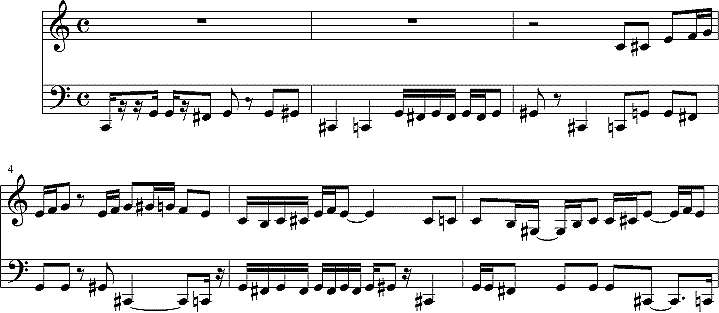
Figure 7. Desert Falcon (Atari 1988, programmer Bob Polaro).
However, in other games where we would expect modal elements, such as Tutankhamun, Arabian, and Montezuma's Revenge, they are strangely absent. It is unclear whether still others, such as the composer of No Escape! (set in an ancient Greek temple) intended the inclusion of modal elements to connote ancient times or the Middle East. Entombed combines horror with archaeology, but does not seem to be invoking the flat twos to conjure Arabic imagery, but rather bringing forth the other connotations of the flattened second, and invoking a Dies Irae-like theme for the horror of it: "You and your team of archaeologists have fallen into the "catacombs of the zombies" reads the manual (see Figure 8) (http://www.atariage.com). Entombed is very typical of VCS songs—very short, playing once at the start, and then becoming silent throughout the game.

Figure 8. Entombed (US Games, 1982).
Seven of the fourteen games containing flat twos were ports (copies) from arcade versions, so the original soundtracks were compared to those of the VCS, four of which contained flat twos, and three of which did not. Kangaroo, Super Cobra, Crystal Castles and Burger Time were all fairly comparable versions, although a few notes were swapped (likely due to the VCS' tunings) (see Figures 9 and 10). The bass-lines were generally abandoned, as the chances of finding both compatible lead and bass voices on the TIA chip would be minimal. As such, Burger Time is reduced to a rendition without harmony.
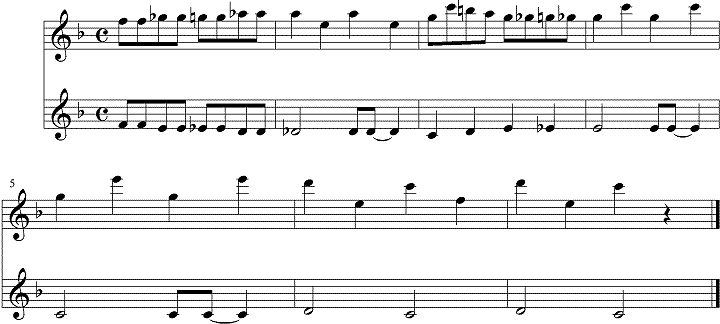
Figure 9. Burger Time—Arcade Version (Data East, 1982).

Figure 10. Burger Time—Atari VCS version. (M Network 1982, sound by Patricia Lewis du Long).
Three other covers, Qbert, Crazy Climber, and especially Up N Down had a noticeably different flavour to the tunes; due, apparently, to the limitations of the Atari soundchip (see Figures 11 and 12). Qbert abandons the harmony, drops the register change, and bears little resemblance to the original.

Figure 11. Qbert—Arcade Version (D. Gottlieb and CO. 1982).

Figure 12. Qbert—Atari VCS Version (Parker Bros/Atari 1983).
Up n' down in particular suggests the Atari's tunings may have had a significant role to play in the prominence of flat twos, as the tune changes from a bluesy F# minor groove to a very unsettling version based in C minor (see Figures 13 and 14), with a simplified bass.

Figure 13. Up N Down—Arcade Version (Sega 1983).
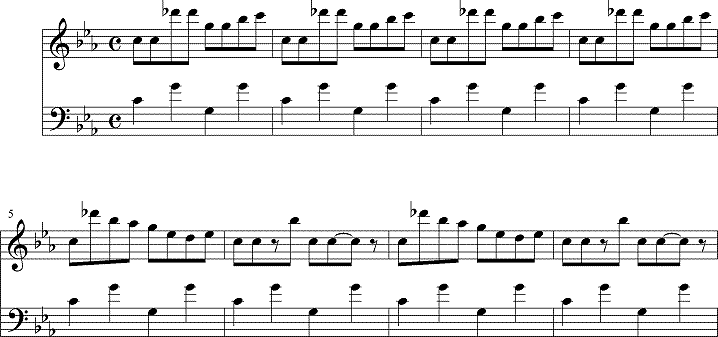
Figure 14. Up N Down—Atari VCS Version (Sega 1983).
It seems fair to say, then, that the prominence of flat twos is to a large extent dependent on the tuning constraints of the TIA soundchip. However, this still fails to explain why the other four arcade songs originally contained flat twos, at a time when these were uncommon in Western popular music, and most of the games companies in this early period were US American. Could it be that, since most composers at the time were programmers rather than musicians, they just didn't "know any better"? Or could it be that by the time these games came out—1982 and 1983—an Atari aesthetic had already been absorbed into game programmers' consciousness? I could find no examples of pre-1981 arcade games with flat twos—although it must be remembered that any games music in this era was rare. In fact, there is evidence to suggest that even very early arcade programmers were influenced by Atari—1979's Asteroids Atari game's music clearly influenced the 1980 Venture Line release Space Force. The two games share the same basic "plot" and gameplay, and the music has a very similar two-tone alternating tune.
Conclusion
The Atari aesthetic, clearly influenced by the limited technology of the early 1980s, is still going strong, as "micro musicians" have worked out how to record and play songs through the old VCS and software sequencers have become freely available on the internet. In 2000, the band Golden Shower won "Best Electronic Music Video at the MTV Brazil Video Music Awards, for their video for a song called 'Video Computer System', written using entirely Atari VCS game sounds. But is the Atari responsible for a much larger shift in tonal sensibilities in the 1980s?
Philip Tagg, in examining "rave" music of the 1990s, and, comparing it with other Western popular music, suggests:
. . . European and North American techno-rave seems to go in a big way for the aeolian and phrygian modes, not as harmonic padding for blues pentatonicism, but as straight sets of minor mode triads or bare fifths without much trace of a seventh, let alone ninth, eleventh or thirteenth (Tagg 1997, 215).
And asks:
Why phrygian? Have British rave musicians taken a stand for the new-age travellers and gypsies? Have European and North American bedroom boffins started to support the pan-Islamic movement or is the phrygian thing a musical 'up yours' to the powers that sent the Nintendo missile through the Iraqi bomb silo window and smashed the lives of thousands of civilians in Baghdad, i.e. the same powers that condemn half the rave-going youngsters to unemployment? Or has everyone been listening to raj music? Or is the phrygian mode just new and different? If so, why that particular difference and not another? What about the lydian mode? It's just as rare in pop as the phrygian (Tagg 1997, 215).
Tagg uses a few examples of Euro House to illustrate his point—BMQ's 'Mastermind' and Capella's 'U Got 2 Know' (both 1993, but the Capella melody is based on the Siouxsie & The Banshees 'Happy House' of 1980), and there are certainly many house and techno tunes using flattened twos—particularly those with an E tonic. Electronic industrial artists likewise began commonly using flat twos in the 1980s and early 1990s (Collins 2002). Although heavy metal artists such as Black Sabbath had used phrygian mode in the 1970s, this trait had yet to gain widespread use in other popular music.[6] While the prominence of flat twos in electronic music could be down to any or all of Tagg's suggestions (or in some cases could have something to do with the setup of programming in tracker sequencers) could it also be that the use and acceptance of this modal element—particularly in genres that were based on synthesizer music, such as techno, house, and industrial—was influenced by the exposure to Atari VCS songs hundreds of times over in the formative years of these musicians and their fans? The implications of this research are that popular musicologists must consider not only the technological constraints of the time period they are studying in any genre, but also the influence of constraints from previous eras. Video games are as popular as film or music, and must therefore be an essential part of popular musicology, as both unique objects and as possibly influential on much popular music since their inception.
Notes
[1] Stolberg explains the difference as follows: "The Atari 2600 VCS produces it's [sic] sound with some shift registers of various lengths. The speed at which it shifts the registers can be set to either the pixelclock/114 or to the CPUclock/114, which means two shifts per scanline or a third of this. Since a NTSC VCS produces 262 scanlines per frame and 60 frames per second this results in output rates of 31440 Hz and 10480 Hz. PAL TVs produce only 312 scanlines and 50 frames, so the output rates are only 31200 Hz and 10400 Hz."
[2] Tuning calculations are according to Stolberg (2000) which were verified by the work of Glenn Saunders (1997) and Ron Fries (1997).
[3] All VCS games song transcriptions are shown in closest approximate pitches and speeds. Speeds would often vary due to the processor's slow speeds, and, as mentioned in the article, the pitches themselves were not clearly set to the diatonic scale, often with atonal results.
[4] By "flat two" I mean, in accordance with common parlance among musicians in the pop, rock or jazz field, the interval between tonic (1) and flat supertonic (2), as in the Phrygian mode (1 - b2 - b 3 - 4 - 5 - b 6 - b 7) or Hijaz mode (1 - b 2 - 3 - 4 - 5 - b 6 - #7). "Flat seconds" will therefore refer exclusively to the second degree of a mode, mostly or only, in this case, the Phrygian.
[5] Flat seconds of course had been used as Spanish or Orientalist signifiers, or, more broadly, as general "Other" in Western art music (as in Rimsky-Korsakov's Cappriccio Espagnol (1887), for instance). See Said (1985) or Scott (1998: 309-335).
[6] The author would like to acknowledge the reviewers for PMO who pointed out the Black Sabbath reference.
References
Anchor Bay Entertainment, 1978. Halloween. DVD.
Collins, Karen, 2002. The Future is Happening Already': Industrial Music, Dystopia, and the Aesthetic of the Machine. Ph.D. Thesis. Liverpool: University of Liverpool.
Cooke, Deryck, 1989. The Language of Music. Oxford: Oxford University Press.
Frazier, Charles, 1997. Cold Mountain. New York: Atlantic Monthly Press.
Fries, Ron, 1997. "TIASOUND: TIA Chip Sound Emulation Library (Atari 2600 VCS)." ftp://members.aol.com/atari800xl/tiasnd11.zip.
Hunter, William, 2000. "Videogame History 101." http://www.emuunlim.com/doteaters/play3sta1.htm.
Rosar, William H. 2001. "The Dies Irae in Citizen Kane: Musical Hermeneutics Applied to Film Music." Film Music: Critical Approaches. Edinburgh: Edinburgh University Press.
Said, Edward W. 1985. Orientalism: Western Conceptions of the Orient. Harmondsworth: Penguin.
Saunders, Glenn, 1997. "Atari 2600 VCS Precise Sound Values and Distortion Breakdown." http://www.classic-games.com/atari2600/vcssound.html.
Scott, Derek B. 1998. "Orientalism and Musical Style." Musical Quarterly, Vol. 82 #2: 309-335.
Slocum, Paul, 2003. "Atari 2600 Music and Sound Programming Guide." http://qotile.net/files/2600_music_guide.txt.
Stolberg, Eckhard, 2000. "Atari 2600 VCS Sound Frequency and Waveform Guide." http://home.arcor.de/estolberg/texts/freqform.txt.
Tagg, Philip. 1997. "From Refrain to Rave: The Decline of Figure and the Rise of Ground." Popular Music 13/2: pp. 209-222.

